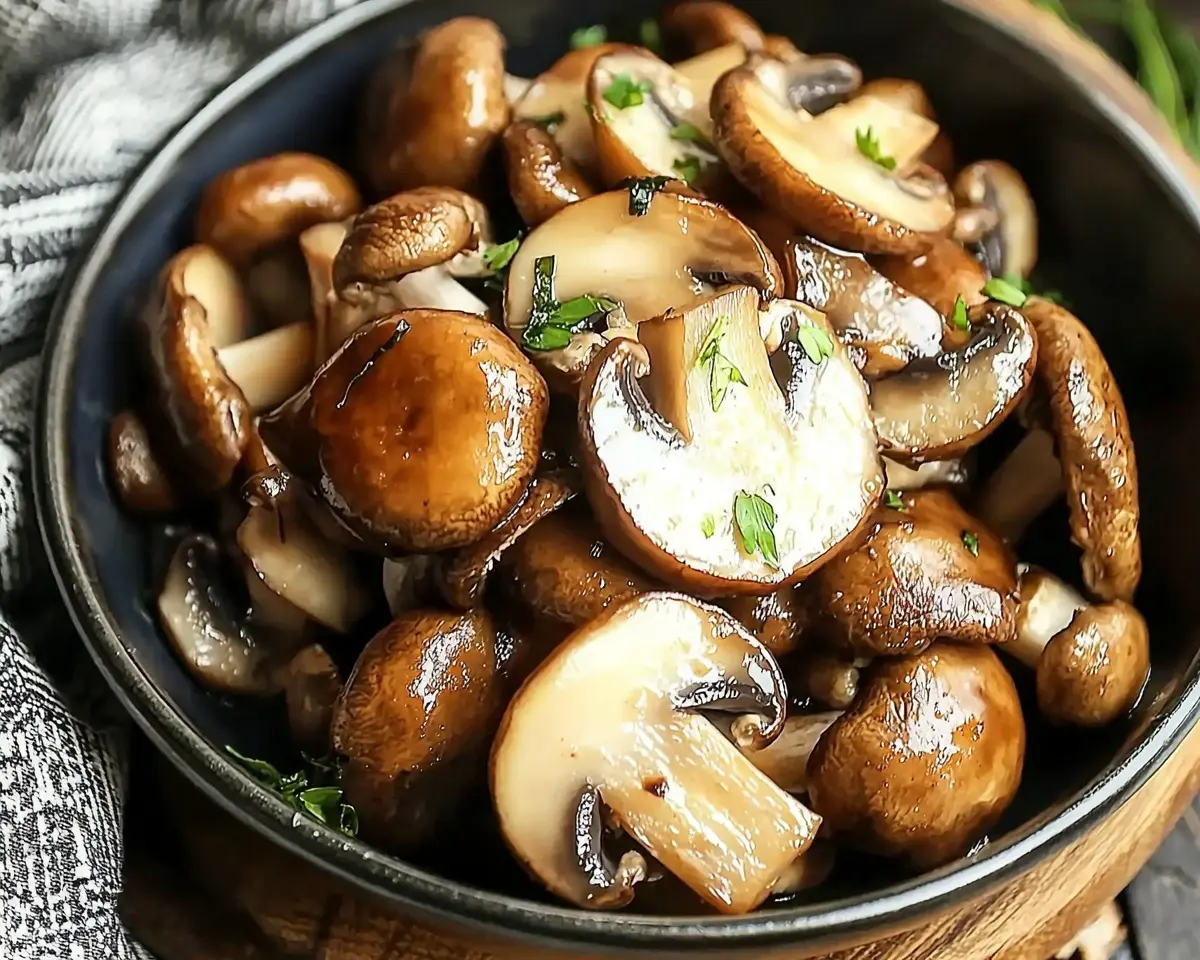Japanese Miso Mushrooms deliver incredible umami flavors in just 10 minutes. Easy hibachi-style recipe with shiitake mushrooms and authentic miso paste.
Hi, I’m Linda, and welcome to Tasty at Home—where bold flavors meet everyday kitchens. Last winter, I stumbled into a tiny Japanese restaurant in Seattle’s International District during a surprise snowstorm. Well, let me tell you, one bite of their miso-glazed mushrooms changed everything I thought I knew about umami.
The earthy aroma hit me first. Then came that perfect balance of salty miso and tender mushrooms that practically melted on my tongue. Man, oh man, I knew I had to recreate this magic at home.
After testing this recipe fifteen times—and yes, burning a few batches when I got distracted—I’ve cracked the code. Furthermore, you don’t need fancy equipment or hard-to-find ingredients. This Japanese miso mushrooms recipe delivers restaurant-quality flavors using ingredients from your local grocery store.
Whether you’re exploring Japanese food vegetables for the first time or you’re a seasoned home cook, this dish will become your new obsession. Additionally, it pairs beautifully with everything from steamed rice to grilled chicken.
Table of Contents
What Makes These Japanese Miso Mushrooms Special
These aren’t your ordinary sautéed mushrooms. Instead, they’re a perfect introduction to authentic Japanese flavors that Americans absolutely love. The combination of umami-rich miso paste with earthy mushrooms creates a depth of flavor that’s both complex and incredibly satisfying.
Moreover, this recipe showcases the versatility of recipes with shiitake mushrooms. While shiitakes are traditional, you can easily substitute with cremini or button mushrooms from any US grocery store. The key lies in the miso glaze that transforms humble mushrooms into something extraordinary.
Ingredient Quality Indicators
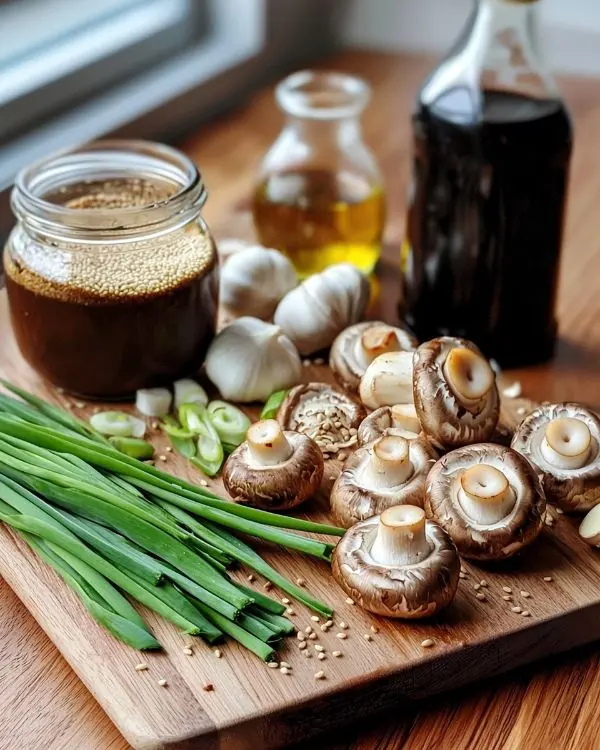
| Ingredient | US Measurement | Metric | Quality Tips |
|---|---|---|---|
| Fresh mushrooms | 1.1 lbs | 500g | Look for firm caps with no dark spots |
| Miso paste | 3 tablespoons | 45ml | White miso offers mild sweetness; red provides bold flavor |
| Soy sauce | 2 tablespoons | 30ml | Choose low-sodium for better control |
| Sesame oil | 2 tablespoons | 30ml | Pure sesame oil, not blended varieties |
| Fresh garlic | 3 cloves | 3 cloves | Firm bulbs with tight skin |
| Fresh ginger | 1 tablespoon grated | 15g | Look for smooth, unblemished skin |
| Green onions | 2 tablespoons chopped | 30g | Bright green tops, firm white bottoms |
| Sesame seeds | 1 tablespoon | 15g | Choose toasted for extra nutty flavor |
Essential Shopping Tips for the best Japanese Miso Mushrooms
You know what? Finding miso paste used to intimidate me. However, most major US grocery stores now carry it in their international aisles. Target, Whole Foods, and even many Kroger locations stock both white and red varieties.
For mushrooms, shiitakes provide the most authentic flavor profile. Nevertheless, cremini mushrooms work beautifully and cost significantly less. Button mushrooms also deliver excellent results, especially when you’re feeding a crowd.
Bold Add-ins and Creative Variations
| Variation Type | Additional Ingredients | Flavor Profile |
|---|---|---|
| Spicy Heat | 1 tsp chili flakes, 1 tsp sriracha | Korean-Japanese fusion |
| Sweet & Savory | 1 tbsp mirin, 1 tsp brown sugar | Traditional Japanese balance |
| Herb Forward | 2 tbsp fresh cilantro, 1 tsp lime zest | Modern American twist |
| Protein Boost | 2 tbsp chopped walnuts, 1 tbsp hemp seeds | Nutritional upgrade |
Equipment You’ll Need
Fortunately, this recipe requires minimal equipment. A large skillet works perfectly for most home kitchens. Cast iron or stainless steel both deliver excellent results.
Essential Equipment
- Large skillet or wok – 10-12 inch diameter preferred
- Sharp knife – For clean mushroom cuts
- Cutting board – Preferably wood or bamboo
- Small mixing bowl – For preparing the miso sauce
- Whisk or fork – To blend the miso mixture smoothly
DIY Equipment Alternatives
Don’t have a wok? No problem. Actually, a regular non-stick skillet works just fine. The key is having enough surface area so mushrooms don’t steam in their own juices.
Missing a microplane for ginger? Use the smallest holes on a box grater. Alternatively, mince it finely with your knife. The flavor impact remains just as powerful.
Step-by-Step Cooking Instructions
Step 1: Prepare Your Mushrooms Like a Pro
Start by gently wiping your mushrooms with a damp paper towel. Avoid washing them under running water because mushrooms absorb moisture like tiny sponges, which dilutes their earthy flavor.
Next, slice them into uniform pieces. For shiitakes, remove the tough stems and slice caps into quarters. Button or cremini mushrooms work best when halved or quartered, depending on size.
Pro tip: Julia Child always said even cuts ensure even cooking. This advice applies perfectly here.
Step 2: Create Your Aromatic Base
Heat sesame oil in your large skillet over medium heat. When it shimmers slightly, you’re ready for the next step.
Add minced garlic and grated ginger to the hot oil. Sauté for 60-90 seconds until fragrant but not browned. Burnt garlic tastes bitter and overwhelms the delicate miso flavors.
Common mistake I made: Initially, I used high heat and burned the garlic every time. Medium heat gives you better control and develops deeper flavors.
Step 3: Sauté the Mushrooms to Perfection
Toss your prepared mushrooms into the aromatic oil mixture. Stir immediately to coat each piece evenly. Cook for 5-7 minutes, stirring occasionally.
Watch for visual cues. The mushrooms will release their moisture first, then begin to caramelize slightly around the edges. This browning creates incredible depth of flavor.
Thomas Keller’s technique: Let mushrooms sit undisturbed for 2-3 minutes between stirs to develop proper browning.
Step 4: Prepare the Magic Miso Sauce
While mushrooms cook, whisk together miso paste, soy sauce, and 2-3 tablespoons of warm water in a small bowl. The mixture should be smooth and pourable.
White miso provides subtle sweetness, while red miso delivers more intense, salty flavors. Both work beautifully in this recipe.
Step 5: Bring Everything Together
Pour the miso mixture over the cooked mushrooms. Stir gently but thoroughly to coat every piece. Cook for an additional 2-3 minutes to heat the sauce and allow flavors to meld.
Taste and adjust seasoning as needed. Some miso pastes vary in saltiness, so trust your palate.
Step 6: Final Touches and Presentation
Remove from heat and immediately garnish with chopped green onions and sesame seeds. The residual heat will slightly wilt the green onions and toast the sesame seeds.
Serve immediately while the mushrooms are still warm and glossy with that gorgeous miso glaze.
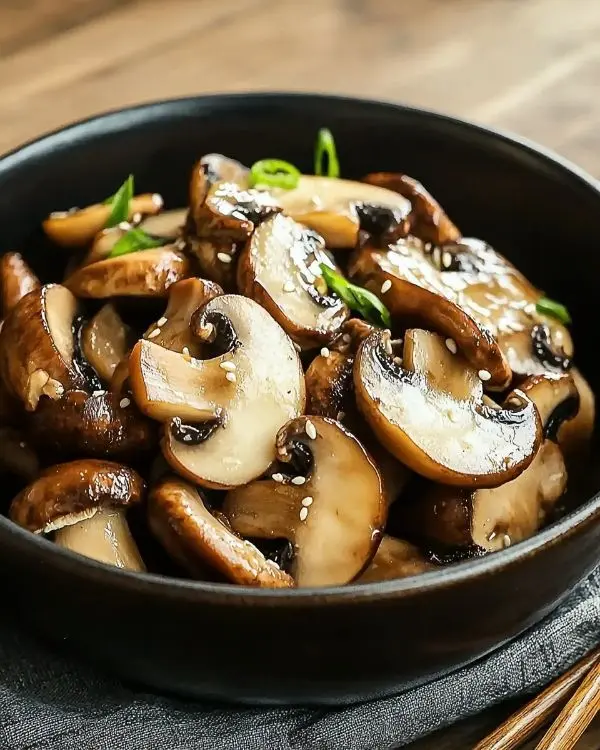
Expert Tips for Perfect Results Every Time
Temperature Control Matters
Medium heat produces the best results consistently. High heat burns the delicate aromatics, while low heat creates soggy, steamed mushrooms instead of properly sautéed ones.
Ingredient Substitutions for Every Kitchen
Miso paste alternatives: If you can’t find miso, combine 2 tablespoons soy sauce with 1 tablespoon tahini and 1 teaspoon brown sugar. It won’t be identical, but it creates similar umami depth.
Sesame oil substitutions: Olive oil works in a pinch, though you’ll lose the nutty Asian flavor profile. Add a sprinkle of toasted sesame seeds to compensate.
Storage and Make-Ahead Tips
| Storage Method | Duration | Best Practices |
|---|---|---|
| Refrigerator | 3-4 days | Store in airtight container |
| Freezer | Up to 2 months | Flash freeze on baking sheet first |
| Make-ahead prep | 24 hours | Prep ingredients, cook day-of serving |
These hibachi mushrooms actually improve in flavor overnight as the miso continues to penetrate the mushrooms. However, they’re best served fresh for optimal texture.
Creative Variations to Keep Things Exciting
Holiday Entertaining Version
During Thanksgiving last year, I served these alongside traditional sides. The umami flavors complemented turkey beautifully. Add a splash of apple cider vinegar for a seasonal twist that bridges Japanese and American flavors.
Protein-Packed Meal Prep
Transform this side dish into a complete meal by adding cubed tofu or edamame during the last few minutes of cooking. Serve over brown rice for a satisfying lunch that packs well for the office.
Regional American Fusion
Southwest Style: Add diced jalapeños and finish with lime juice and cilantro. Southern Comfort: Incorporate a splash of bourbon and fresh thyme. Pacific Northwest: Include foraged chanterelles when in season.
Perfect Pairings and Serving Suggestions
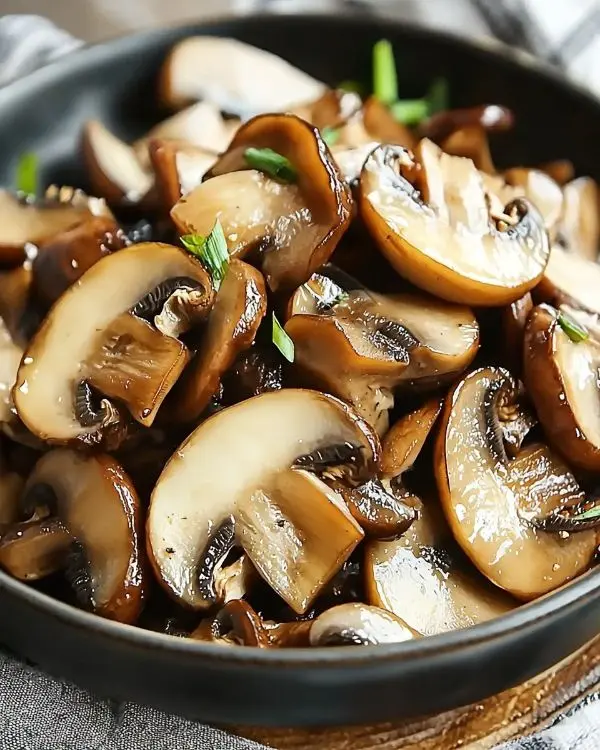
These Japanese miso mushrooms complement numerous dishes beautifully. Serve them alongside hibachi zucchini for an ultimate crispy vegetable medley. The contrasting textures create an amazing dining experience.
For a complete Japanese-inspired meal, pair with the best yaki udon and finish with traditional taiyaki fish dessert. This combination showcases the beautiful progression of Japanese flavors.
Additionally, these mushrooms work wonderfully over:
- Steamed jasmine or brown rice
- Grilled chicken or salmon
- Asian-inspired grain bowls
- Even scrambled eggs for a fusion breakfast
Beverage Pairings
Green tea provides a traditional accompaniment. However, a crisp Pinot Grigio or even a light beer like Asahi complements the earthy, umami flavors perfectly.
Japanese Miso Mushrooms FAQs
Do mushrooms and miso go together?
Absolutely! Mushrooms and miso create one of the most harmonious flavor combinations in Japanese cuisine. Both ingredients contain high levels of natural glutamates, which enhance each other’s umami properties and create incredibly satisfying depth of flavor.
What kind of mushrooms are in miso soup?
Traditional miso soup typically features small pieces of shiitake mushrooms, though enoki and nameko mushrooms are also common. For this sautéed version, shiitake, cremini, or button mushrooms all work beautifully with the miso glaze.
What is Japanese miso?
Japanese miso is a fermented soybean paste that’s been a cornerstone of Japanese cooking for over 1,000 years. It’s made by fermenting soybeans with salt and koji (a beneficial mold), creating a complex, savory paste rich in umami flavors and probiotics.
What are Japanese mushrooms called?
Popular Japanese mushrooms include shiitake (the most common), maitake (hen-of-the-woods), enoki (thin, white mushrooms), and shimeji (cluster mushrooms). Shiitake remains the most widely available in US grocery stores and works perfectly for this recipe.
The Perfect Finish for Your Japanese Miso Mushrooms
Oops, I almost forgot to mention the most important part! These Japanese miso mushrooms represent more than just another side dish recipe. They’re your gateway into the incredible world of Japanese flavors that perfectly suit American palates.
Just like that snowy evening in Seattle transformed my understanding of umami, this recipe might just change how you think about vegetables. The combination of earthy mushrooms and complex miso creates something truly special that bridges cultures beautifully.
Next time you’re planning dinner, consider serving these alongside a delicate peach phyllo dough dessert for a meal that travels from savory to sweet with elegant sophistication.
Remember, the best recipes aren’t just about following instructions. They’re about creating memories, sharing flavors, and bringing people together around the dinner table. Whether you’re cooking for family, friends, or just treating yourself to something special, these Japanese miso mushrooms deliver every single time.
So grab those mushrooms from your local grocery store, and let’s create some kitchen magic together. Because here at Tasty at Home, every dish tells a story—and this one is definitely worth sharing.
What’s your favorite way to serve Japanese food vegetables? Tag us on social media and show us your unique variations!
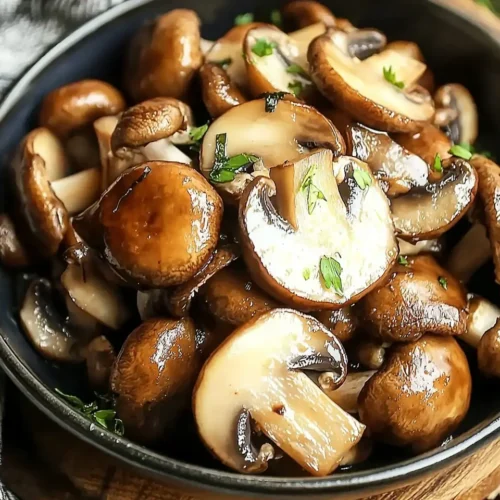
Japanese Miso Mushrooms
Equipment
- Large skillet or wok
- Sharp knife
- Cutting board
- Small mixing bowl
- Whisk or fork
Ingredients
Main Ingredients
- 500 g Fresh mushrooms shiitake, cremini, or button
- 3 tbsp Miso paste white or red
- 2 tbsp Soy sauce low sodium preferred
- 2 tbsp Sesame oil pure toasted sesame oil
- 3 cloves Garlic minced
- 1 tbsp Fresh ginger grated
- 2 tbsp Green onions chopped
- 1 tbsp Sesame seeds toasted
Instructions
- Gently wipe mushrooms with a damp paper towel. Remove shiitake stems, slice caps into quarters, or halve cremini/button mushrooms.
- Heat sesame oil in a large skillet over medium heat. Add minced garlic and grated ginger. Sauté for 60-90 seconds until fragrant.
- Add mushrooms to the skillet. Stir to coat in the aromatic oil. Cook 5-7 minutes, allowing them to release moisture and caramelize.
- Whisk miso paste, soy sauce, and 2-3 tbsp warm water in a small bowl until smooth and pourable.
- Pour the miso mixture over the mushrooms. Stir gently and cook 2-3 minutes until flavors meld.
- Remove from heat. Garnish with chopped green onions and sesame seeds. Serve immediately.

